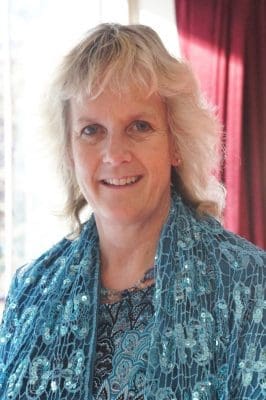IMAGINE a tropically-adapted Bos indicus bull working in a breeder paddock in northern Australia, whose semen produced calves carrying not his own Brahman paternal genes, but those of an elite Angus or Wagyu.
Such a scenario was one of the exciting possibilities discussed by a leading US animal scientist during a recent Australian visit.
Extension specialist Professor Alison Van Eenennaam, from the University of California’s Department of Animal Science, spoke to a University of Queensland audience last month, as part of the Douglas Ormonde Butler Memorial Lectureship.

Alison Van Eenennaam
She touched on several new possibilities to accelerate genetic improvement in livestock by incorporating phenotypic and genomic information, advanced reproductive technologies, and precision breeding methods into conventional breeding and selection programs.
A new wave of genetic technologies may one day provide ‘artificial insemination on legs’ for the beef industry, Prof Van Eenennaam told the audience.
New developments were poised to enable the development of a population of commercial animals that lacked their own germline cells, but which instead carried transplanted gonial stem cells delivering the genetics from elite donor stud animals.
One of the first applications of gene editing would be to develop a targeted ‘knock-out’ of a specific cell at the eight-cell embryo stage – effectively cutting a gene in half and turning it off.
In a Brahman bull well-suited to Australia’s harsh northern environment, the process could turn off his ability to produce germ cells (sperm), and then introducing germ cells from another breed (Angus or Wagyu, for example).
Prof Van Eenennaam called this process ‘surrogate sires.’
“It’s really about putting artificial insemination semen straws on legs, letting them go breed the cows rather than having to synchronise and inseminate cows in the crush. It’s potentially a way of bringing elite genetics to the beef industry in extensive, harsh conditions,” she said.
While the process is still in the conceptual stage, ‘knock-out’ gene editing has already been applied to male pigs and chickens in the laboratory.
‘Sex in a petri-dish’
Perhaps even more tantalising is the possibility of being able to perform meiosis (the process where a single cell divides twice to produce four cells containing half the original amount of genetic information. These cells are sex cells – sperm in males, eggs in females) in a petri dish, removing the need even for ‘legs’.
Novel breeding schemes based on developments in embryonic stem cell technologies involving multiple in vitro rounds of genomic selection, gene editing, gamete production and fertilisation could dramatically reduce both the generation interval and the genetic lag between nucleus and commercial populations, Prof Van Eenennaam said.
“Instead of having to wait for an animal to be conceived, born and reach sexual maturity – two or three years in cattle – the cycle could be condensed to just two or three months,” she said. “It would accelerate the rate of genetic gain by a factor of ten.”
Such developments would be especially valuable for species such as cattle, with long generation intervals, she said.
The process has been accomplished in the laboratory in mice, and with the embryonic stem cells now from cattle, it would be a matter of reducing that to practice, and getting the right culture conditions to generate sperm and eggs.
“It means the stud sector could conceivably be housed in a laboratory,” Prof Van Eenennaam said.
She said putting these schemes into practice would require investment and research to successfully scale the necessary technologies, and likely some industry reorganisation to maintain performance recording and distribute elite genetics.
- Alison L. Van Eenennaam is a Cooperative Extension Specialist in the Department of Animal Science at the University of California, Davis and runs the Animal Genomics and Biotechnology Laboratory. She has served on committees such as the USDA National Advisory Committee on Biotechnology in the 21st Century and was awarded the 2014 Borlaug CAST Communication Award.

The resulting crossbred will still have to survive the harsh tropical conditions of the north dont they. They will have to adapt and produce which have proven tough on breeders. Elite brahman genetics should be easier work for the producer I feel.
We could be involved in developing surrogate sire technologies here in Australia if our project proposal is approved – fingers crossed! And yes, surrogate sires can deliver elite genetics of any breed: the technology application will be market driven.
Thanks for your comment, Marina. Good luck with your application. Editor
Just saying… This fascinating technology could also supply elite genetics of Hereford, Limousin or Shorthorn, Brahman or any other breed to the north! This article has the whiff of a case of subtle PR at work. Beef Central may like to examine and reflect on its propensity for #blackbias and succumbing to the #AngusPRMachine
Thanks for your comment, Alice. Apologies if the reference in the story gave any impression that it was ‘favouring’ Angus in some way. That was certainly not our intention.
Dr Van Eenennaam simply chose to use ‘Angus’ and ‘Wagyu’ in her example, to illustrate the potential using the gene editing process to use a ‘surrogate’ bull (tropically adapted to harsh northern conditions) to deliver genetics from another breed, less able to cope with the conditions. I saw no breed bias in her comments whatsoever – but you are correct, in that the process could be used to deliver superior genes of any chosen breed. Editor.